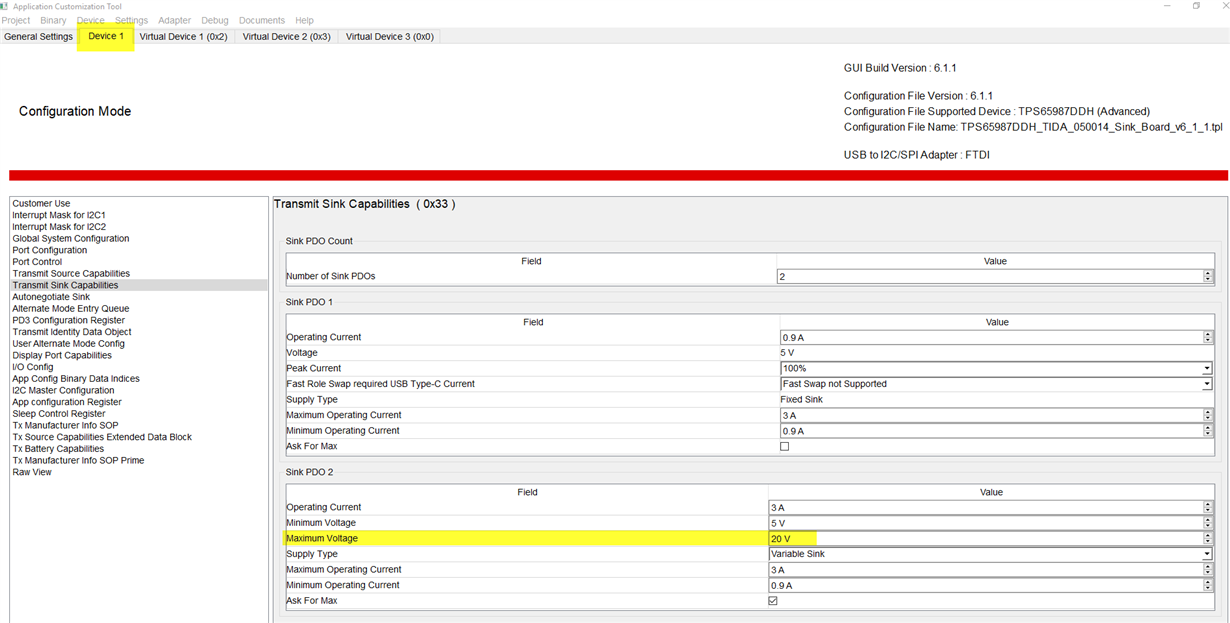Other Parts Discussed in Thread: TIDA-050014
Dear Sir/Mam,
I made a custom board using the TPS65987D.
Now I use the Application Customization tool to create a flash image for it. I used the existing TIDA-050014.pjt as a template.
At this stage I need a sink-only configuration, which will accept any source, from 5V to 20V.
Since I don't have spare GPIOs to use, I need to make some I2C writes with the external microcontroller, which will configure the TPS65987D to inform the charger to apply high voltage at the bus.
As with the template, I've got 3 Configuration data sets, the question is how do I switch them without the GPIO. I thought it can be done with User Alternative modes, but with any configuration I tried my attempt to issue [AMEn] command gives me REJECT_CMD return status. What am I doing wrong?
Please help!
Thanks a lot and Best Regards,
Boris.



